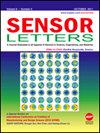Electrophoretic Deposition of Uniform Carbon Nanotubes for Nickel Nanocomposites Based Nonenzymatic Glucose Sensor
引用次数: 3
Abstract
Multiwalled carbon nanotubes (CNTs) have enormous applications but restricted due to low dispersibility. In this project, dispersion efficiency of nonfunctionalized, covalently functionalized and non-covalently functionalized CNTs has been investigated. The surfactant, Sodium Dodecyl Sulphate (SDS), played an important role in stable dispersion. UV-Visible spectroscopy compared the dispersion behavior of all CNTs suspensions. The surfactant functionalized CNTs revealed the maximum dispersion. The as produced highly stable dispersion was utilised in fabrication of highly homogeneous CNTs electrode using electrophoretic deposition (EPD) and its redox peak currents were higher than Fluorine doped tin oxide (FTO) electrodes, indicating increased charge transport by CNTs. The fabricated CNTs electrode was modified with Nickel (Ni) nanoparticles for Ni/CNTs nanocomposite based nonenzymatic glucose sensor fabrication. The CNTs coated FTO substrate was decorated with Ni nanoparticles (NPs) using electrodeposition by cyclic voltammetry (CV). The electron microscopic analysis showed the uniformly dispersed particles of Ni on CNTs electrodes. The Ni/CNTs/FTO based non enzymatic glucose sensor exhibits ∼4 s fast response time and ∼605.0 μAmM–1 cm–2 sensitivity along with wide concentration (0.005–3.5 mM) and the detection limit ∼5.0 μM. The easy fabrication technique of Ni-CNTs electrodes made them a reliable glucose sensor having good stability.均匀碳纳米管在镍纳米复合材料非酶葡萄糖传感器上的电泳沉积
多壁碳纳米管(CNTs)具有广泛的应用前景,但由于分散性低而受到限制。在本项目中,研究了非官能化、共价官能化和非共价官能化碳纳米管的分散效率。表面活性剂十二烷基硫酸钠(SDS)在稳定分散中起着重要作用。紫外可见光谱比较了所有碳纳米管悬浮液的分散行为。表面活性剂功能化的CNTs表现出最大的分散性。利用电泳沉积(EPD)制备高度均匀的碳纳米管电极,其氧化还原峰值电流高于氟掺杂氧化锡(FTO)电极,表明碳纳米管增加了电荷传输。用镍(Ni)纳米颗粒修饰制备的碳纳米管电极,用于制备基于Ni/CNTs纳米复合材料的非酶葡萄糖传感器。采用循环伏安法(CV)电沉积的方法,用Ni纳米颗粒(NPs)修饰CNTs包覆的FTO衬底。电镜分析表明,纳米碳管电极上有均匀分散的Ni颗粒。基于Ni/CNTs/FTO的非酶促葡萄糖传感器具有快速响应时间~ 4 s、灵敏度~ 605.0 μ am - 1 cm-2、宽浓度(0.005-3.5 mM)和检出限~ 5.0 μM的特点。镍-碳纳米管电极制备工艺简单,稳定性好,是一种可靠的葡萄糖传感器。
本文章由计算机程序翻译,如有差异,请以英文原文为准。
求助全文
约1分钟内获得全文
求助全文
来源期刊

Sensor Letters
工程技术-电化学
自引率
0.00%
发文量
0
审稿时长
6 months
期刊介绍:
The growing interest and activity in the field of sensor technologies requires a forum for rapid dissemination of important results: Sensor Letters is that forum. Sensor Letters offers scientists, engineers and medical experts timely, peer-reviewed research on sensor science and technology of the highest quality. Sensor Letters publish original rapid communications, full papers and timely state-of-the-art reviews encompassing the fundamental and applied research on sensor science and technology in all fields of science, engineering, and medicine. Highest priority will be given to short communications reporting important new scientific and technological findings.
 求助内容:
求助内容: 应助结果提醒方式:
应助结果提醒方式:


